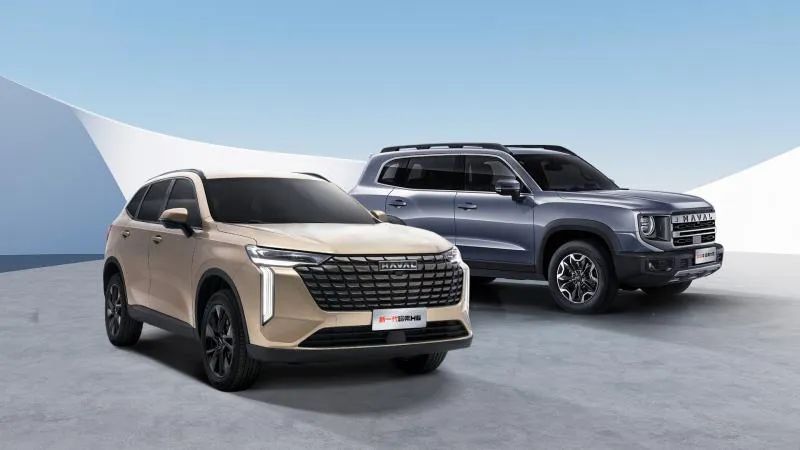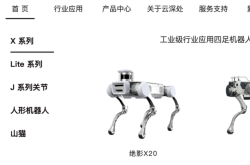“After cutting off the 'dead weight,' has Great Wall Motor, once the most profitable, returned?
![]() 08/07 2024
08/07 2024
![]() 620
620
Tank becomes the engine of sales growth
In 2020, Wei Jianjun, Chairman of Great Wall Motor, posed a soul-searching question to himself and Great Wall Motor in a film reflecting on the company's 30-year journey: “Can Great Wall Motor survive next year?” Although Great Wall Motor achieved record-high revenue and net profit growth that year, Wei believed that the company was hanging by a thread.
In the following years, due to indecision in new energy initiatives and slower growth of its flagship brands, Great Wall Motor lagged significantly behind “old rivals” such as BYD and Geely in terms of growth rate. During its self-rescue process, Great Wall Motor’s strategic adjustments repeatedly caused brand deceleration. Even Haval H6, which had dominated the SUV sales charts for years, was dethroned. Although Great Wall Motor remained at the forefront of Chinese brands, it struggled to shake off the label of “lagging behind” in recent years compared to its peers. However, a recent set of data released by Great Wall Motor sent shockwaves through the industry. On July 10, Great Wall Motor released its first-half performance forecast, indicating that the company expects to achieve a net profit of RMB 6.5 to 7.3 billion in the first half of the year, an increase of RMB 5.139 to 5.939 billion, or 377.49% to 436.26%, year-on-year. Excluding non-recurring items, the net profit is projected to be RMB 5 to 6 billion, an increase of RMB 4.251 to 5.251 billion, or 567.13% to 700.56%, year-on-year. According to Great Wall Motor’s production and sales bulletin, the company sold 559,700 vehicles in the first half of the year, up 7.79% year-on-year.
After struggling for several years, has the most profitable Great Wall Motor returned, even though sales growth has not yet returned to its peak?
Changes in Sales Structure
While sales growth is typically the primary driver of revenue and net profit increases in automakers’ financial reports, Great Wall Motor’s sales growth in the first half of the year was insufficient to support its soaring profits.
Great Wall Motor attributed this to two main factors in its financial report: the impact of its core business, including overseas sales growth and further optimization of domestic product mix; and non-operating gains and losses, primarily government subsidies, which increased year-on-year.
From January to June, Great Wall Motor sold 132,400 new energy vehicles, up 41.99% year-on-year; overseas sales reached 201,500 vehicles, up 62.59% year-on-year, with 38,100 vehicles sold overseas in June, setting a new monthly record; sales of vehicles priced above RMB 200,000 reached 140,500, up 64.28% year-on-year.

Image Source: Great Wall Motor
The above data reveals a significant increase in overseas sales and sales of vehicles priced above RMB 200,000, which Great Wall Motor considers one of the key factors in its profit turnaround.
Among vehicles priced above RMB 200,000, the Tank brand contributed more than WEY. Since its launch at the end of 2020, Tank has sold nearly 500,000 vehicles. From January to June this year, Tank sold 116,000 vehicles, up 98.94% year-on-year, making it the growth engine for Great Wall Motor.
In the eyes of many investment institutions, Tank and pickup trucks have high barriers to entry and strong profitability, making them the company’s primary cash cows. A research report from Soochow Securities also pointed out that in the first half of the year, the Tank brand and overseas exports contributed significantly to profitability, with increased sales driving continuous product mix optimization, which in turn led to a rapid increase in average prices, achieving high-quality development and strong performance delivery.
GF Securities’ research report mentioned that Great Wall Motor’s net profit per vehicle in the second quarter of 2024 was RMB 12,000, up RMB 9,000 year-on-year and RMB 5,000 quarter-on-quarter. “Great Wall Motor knows what to do and what not to do. We moderately reduce sales of heavily loss-making products and vigorously promote those with minimal, small, or high profits,” Wei Jianjun said at a recent annual shareholders’ meeting. The automotive industry is indeed fiercely competitive, especially in 2023 when electric vehicle industry losses increased. However, Great Wall Motor pursues quality market share, adheres to compliance standards amidst industry losses, and maintains a long-term development strategy.
From the current situation, among Great Wall Motor’s five brands, Haval sold 299,738 vehicles from January to June, up 2.42% year-on-year; WEY sold 19,867 vehicles, up 9.46%; pickup trucks sold 91,916 vehicles, down 10.41%; Ora sold 31,749 vehicles, down 32.87%; and Tank sold 116,038 vehicles, up 98.94% year-on-year.
Clearly, WEY and Tank have emerged as the growth drivers, with Haval maintaining the highest sales but minimal growth. Other brands are lagging behind, particularly Ora, which Wei Jianjun described as “suffering severe losses.” Therefore, Wei believes that market competition will remain intense over the next three years. Besides adhering to a long-term strategy, Great Wall Motor must leverage its strengths in pickup trucks, Tank, and exports.
Development Challenges Remain
Unlike its past focus on Haval, Great Wall Motor has rapidly expanded its multi-brand strategy in recent years, from WEY and Saloon to Ora and Tank, and even formed a joint venture with BMW called Beam Auto.
The multi-brand strategy has led to significant investments, resource dispersion, and a lack of synergies. Multiple organizational restructurings, product mix adjustments, and personnel changes have also impacted Great Wall Motor’s operations internally.
Despite having rich reserves in new energy technologies and products, Great Wall Motor has not capitalized on the boom in new energy vehicles, appearing slow to adapt.
Especially Ora, launched in 2018 as a “new energy vehicle that loves women,” gained popularity due to the rise of the female economy and its cute design. However, issues like the “chip swapping” scandal damaged its brand image, leading to declining sales.
Ora peaked two years after its launch but then declined over the next two years. Although Great Wall Motor has not abandoned Ora, the market is now flooded with female-friendly vehicles, making Ora less competitive.
WEY, another struggling brand, was once a high-end hope for Great Wall Motor but slowed down after Tank became an independent brand. Its first-half sales lagged behind Great Wall Motor’s other brands.

Image Source: Great Wall Motor
More striking than Ora and WEY is the decline of Haval, once the SUV king and labeled the “national god car” with over 100 monthly sales championships. While Haval still accounts for half of Great Wall Motor’s sales, its future trajectory is crucial.
Regardless of which brand suffers in the new energy vehicle market, the impact on Great Wall Motor is evident. According to the China Passenger Car Association, new energy vehicle retail penetration reached 48% in June 2024, with Chinese brands at 72.5%. From January to June, 4.11 million new energy vehicles were sold, with a penetration rate of 41.8%. In contrast, Great Wall Motor sold 132,374 new energy vehicles in the first half, up 41.99% year-on-year, but with a penetration rate of only 23.65%, slightly higher than 2023 but far below the market average.
China Galaxy Securities noted that due to inadequacies in product pricing, technology, channels, and brand positioning, Great Wall Motor’s first-generation new energy products struggled in market expansion, lagging behind the overall market in its new energy transition. However, the company has adjusted its product strategy and leveraged research and development achievements to significantly improve its intelligence technology, rapidly addressing past shortcomings and reigniting its new energy transition.
Currently, Great Wall Motor excels in traditional fuel vehicles but lags in new energy vehicles. Given the disparity between its soaring first-half net profit and overall sales growth, significant adjustments may be imminent.
This article is originally created by China News Auto. Feel free to share. For media reprints, please indicate the author and source. Any media or self-media producing videos or audio scripts based on this content will be held legally responsible.








